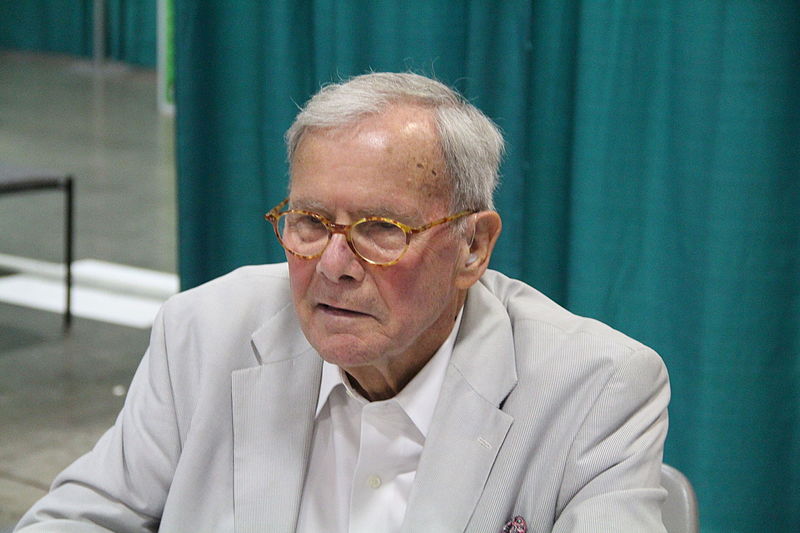It was one of those moments that make so much of the culture of 21st-century America cringe-worthy. Last week on NBC’s “Meet the Press,” longtime network star Tom Brokaw was criticizing supporters of U.S. President Donald Trump and analyzing their fears about immigration, whether of the legal or illegal variety.
During the course of his remarks, Brokaw said something that was judged to be politically incorrect. While he implied that hostile attitudes towards immigration were rooted in racism, he also said the following:
In response to this, Brokaw did what anyone who values his acceptance in liberal circles would do. He issued an apology saying how terrible he felt. But his first attempt was not judged abject enough, so he issued another even more humble one in which he praised one commentator who had savaged him for his heresy.
But the problem with this discussion is not just that Brokaw underestimated the extent to which orthodoxy on this subject is strictly enforced. It’s that the whole concept of immigrants trying to fit into America has gone out of fashion, and this is, as Brokaw tried to point out, helping fuel hostility to newcomers.
The story of the Jewish immigrant experience in the United States is, in this respect, instructive. Efforts to become and be recognized as Americans were the priority for those who flooded into the country in the last decades of the 19th century and the beginning of the 20th. Yet alongside the ardent desire to fit in was the recognition that however much we achieved here, it was still important for Jews to preserve their particular identity and faith in a new land where they were a small and sometimes despised minority.
The tension between those two trends wove the fabric of American Jewish life in the 20th century as immigrants strove to learn English and establish themselves financially, while also investing in institutions that would make it possible for them to be both Americans and Jews. While Jewish immigrants initially lived in enclaves where their language, culture and faith dominated, the struggle to learn English and to learn about America was always important. But above all, it was a community that valued education and strove incessantly to give their children opportunities to succeed.
In a famous excerpt from the Yiddish Forverts newspaper’s storied “Bintel Brief” column, an immigrant reader asked editor Abraham Cahan what should he do about his son’s desire to play baseball since “I want my boy to grow up to be a mensch, not a wild American runner.”
In response, Cahan urged his correspondent to let the boy play since it was a healthy occupation and, unlike in Russia or Poland, Jews in America didn’t have to hide in their homes from non-Jews. Most of all he wrote, “Let’s not raise our children to be foreigners in their own country.” Far from being a cocoon in which Jews could isolate themselves from other Americans, the institutions of Jewish life facilitated assimilation rather than opposing it.
The lore of the Jewish immigrant experience—like Leo Rosten’s classic, The Education of H*Y*M*A*NK*A*P*L*A*N, was one in which the immigrant struggled to assimilate, rather than resist it.
Of course, it wasn’t just baseball that drew Jews away from the urban shtetls, like the Lower East Side, where immigrants congregated. The lure of mainstream American culture was irresistible, and the result was that within a couple of generations, many Jews had worked their way into the middle and upper-middle classes of society.
Moreover, America didn’t really demand a stark choice between their heritage and fitting in. As U.S. Supreme Court Justice Louis Brandeis pointed out in defense of American Zionism, “To be good Americans, we must be better Jews, and to be better Jews, we must become Zionists.”
The difference between today’s immigrants and those who came from Europe a century or more ago is not one about their ability or value, or even their capacity to assimilate if given the chance. America was built on the diversity and strength of its immigrants. The overwhelming majority of Hispanic immigrants today are, in that respect, no different from the Jews who arrived a century earlier. But what Brokaw was referring is the contemporary emphasis on multiculturalism that has devalued the need or the urgency for immigrant populations to assimilate in the same manner as in the past. To the extent that this way of thinking discourages today’s immigrants from going through the same rites of passage as their predecessors it is doing real harm. Anyone who thinks that hasn’t added to their burdens or believes that it is only racism at fault is deeply mistaken.
Xenophobic hostility to immigrants is as old as the United States. Resistance to newcomers—whether they were Germans, Irish, Italians, Jews or Chinese—is part of the context of American history in which we can understand some deplorable attitudes towards Hispanics. But leaving aside separate arguments about respecting the rule of law and opposing those who flout it by entering the country illegally, Brokaw was right about the importance of assimilation. Those who denigrate it are doing neither Hispanics nor any immigrant population any favors.

























